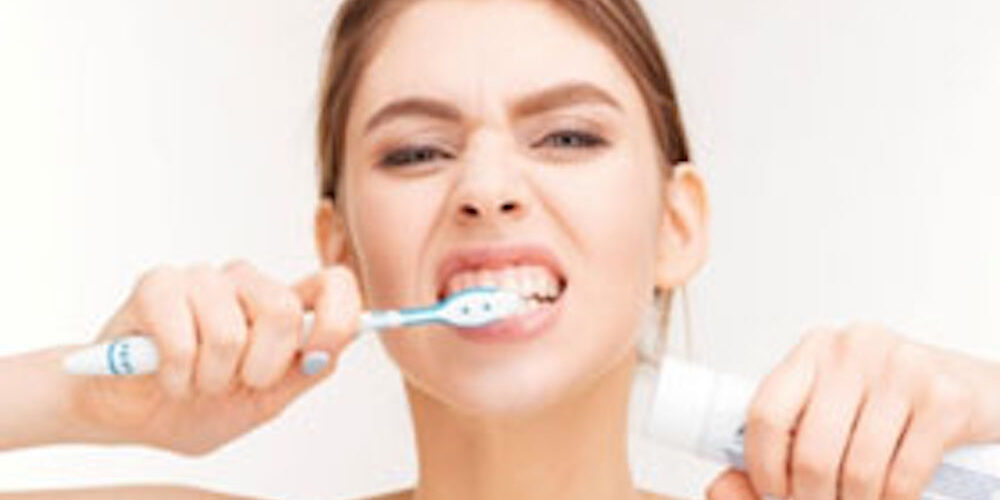Gingival recession and tooth abrasion has become a common problems in the recent years and is mainly associated with poor oral hygiene and aggressive tooth brushing habits. They increases with age and commonly observe in men than women. Gingival recession is defined as the shift of marginal gingiva apically beyond the cemento enamel junction creating an esthetic problem if present in anterior teeth and may be associated with hypersensitivity, cervical wear, increase in plaque accumulation, etc.

Tooth abrasion is the wearing of the hard and soft tissues especially at the cemento-enamel junction and supporting periodontium due to faulty tooth brushing technique resulting in gingival trauma and can progress to gingival recession with time. Gingival recession may also be associated with periodontal diseases, alveolar bone loss, etc. The incidence is less prevalent in younger age groups compare to older individuals and increases with age.

Recession to periodontal disease is associated with poor oral hygiene but recession to aggressive or traumatic tooth brushing is associated with good oral hygiene. Aggressive tooth brushing is brushing of the teeth with more pressure or use of hard bristles toothbrushes.
Signs of aggressive tooth brushing includes flatten toothbrush bristles and occur due to more pressure applied to the tooth surface resulting in flattening of the toothbrush over time.

Frequency and force apply while brushing, brush design, improper brushing technique, etc are contributing factors of gingival trauma or tooth abrasion. Besides, a palm grip method of holding toothbrush is more associated with gingival injuries then a pen grip method of holding toothbrush. Brushing with fluoride containing toothpaste has clear benefits of the overall oral health.
Another sign is receding of the gums due to use of hard bristles toothbrush with more pressure resulting in pushing of the gums backward (gum recession). Besides, it worsen plaque accumulation as it does not remove plaque from the teeth effectively. Plaque can be remove effectively using soft-bristle toothbrush with light pressure and proper brushing techniques.
Other signs and symptoms of gingival recession includes enamel wear, increase tooth sensitivity, tooth decay, etc and gingival recession is mainly found in premolars due to the tooth position.
The causes of gingival recession other than periodontal disease and aggressive tooth brushing includes:
- Malocclusion
- Path of tooth eruption
- Tooth shape and position in the arch
- Occlusal trauma
- Plaque accumulation


Smoking and tobacco use
- High frenal attachment
- Self-inflicted injuries like oral piercing, etc

Various sequences of aggressive toothbrushing leading to gingival recession-
- Abrasion of the tooth at cemento-enamel junction
- Loss of cementum
- Loss of periodontal attachment
- Loss of alveolar bone
Further, increase plaque accumulation and difficulty in cleaning can lead to inflammation of the gingiva and finally periodontal diseases if left untreated. According to a study, brushing in horizontal manner contributes to 64% of recession and 46% of the recession is contributed by brushing for > 3 minutes. Though brushing of the teeth is an important part of daily oral care routine, if proper techniques are followed it can give a healthy mouth and a healthy smile rather than harming the tooth and the surrounding periodontium.

Listed below are some rules to be follow while brushing to obtain a healthy gums and beautiful white teeth-
- Brush twice daily for 2-3 minutes
- Use of soft-bristled toothbrush to reduce abrasion and enamel wear
- Replace the toothbrush every 3-4 months
- Use of fluoride containing toothpaste
- Use of mouthwashes for extra protection
- Use of floss regularly
- Proper brushing technique
Proper brushing technique

- Do not apply too much pressure
- Tilt the brush at a 45 degree angle against the gum line
- Sweep or roll the brush away from the gum line
- Use small and circular back and forth motion
- Gently brush the outside, inside and chewing surface of each tooth
- Finally, clean the tongue to remove bacteria and freshen breath
So, take proper care of the overall oral health as maintaining good oral and dental health can keep cavity, bad breath and gum diseases at bay and help to keep the teeth healthy as we age.






